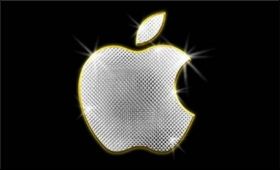|
|
|

|
Apple regains 2nd spot in global smartphone market, Xiaomi slips to 3rd
|
|

|
|
| Top Stories |
 |
|
|
|
SME Times News Bureau | 15 Oct, 2021
Apple regained second place in the global smartphone market with 15 per
cent share in the third quarter (Q3) this year, thanks to strong early
demand for iPhone 13, a new report showed on Friday.
Samsung was
the leading smartphone player with 23 per cent share. Xiaomi took 14 per
cent share for the third place, while vivo and OPPO completed the top
five with 10 per cent share each, according to preliminary data provided
by global market research firm Canalys.
Global smartphone
shipments fell 6 per cent in the third quarter (July-September period)
this year, as vendors struggled to meet demand for devices amid
component shortages.
"The chipset famine has truly arrived. The
smartphone industry is striving to maximise production of devices as
best it can. On the supply side, chipset manufacturers are increasing
prices to disincentivize over-ordering, in an attempt to close the gap
between demand and supply," said Canalys Principal Analyst, Ben Stanton.
Despite
this, "shortages will not ease until well into 2022. As a result of
this, as well as high costs of global freight, smartphone brands have
reluctantly pushed up device retail pricing", Stanton stated.
"At
the local level, smartphone vendors are also having to implement
last-minute changes in device specification and order quantities. It is
critical for them to do this and maximise volume capacity, but
unfortunately it does lead to confusion and inefficiency when
communicating with retail and distributor channels," he added.
Many channels are nervous heading into important sales holidays, such as Singles' Day in China, and Black Friday in the west.
"Channel
inventories of smartphones are already running low, and as more
customers start to anticipate these sales cycles, the impending wave of
demand will be impossible to fulfill," Stanton added.
Customers should expect smartphone discounting this year to be less aggressive.
"But
to avoid customer disappointment, smartphone brands which are
constrained on margin should look to bundle other devices, such as
wearables and IoT, to create good incentives for customers," Stanton
said.
|
|
|
| |
|
|
|
|
|
|
|
|
|
|
|
|
|
|
| |
| Customs Exchange Rates |
| Currency |
Import |
Export |
US Dollar
|
₹88.70
|
₹87 |
UK Pound
|
₹119.90
|
₹116 |
Euro
|
₹104.25
|
₹100.65 |
| Japanese
Yen |
₹59.20 |
₹57.30 |
| As on 30 Oct, 2025 |
|
|
| Daily Poll |
 |
 |
| Who do you think will benefit more from the India - UK FTA in the long run?
|
|
|
|
|
|
| Commented Stories |
 |
|
|
|
|
|
| |
|